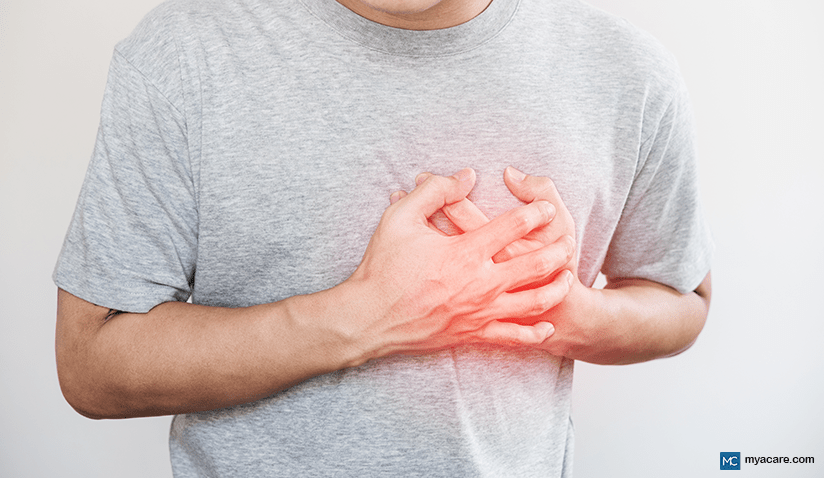COMMON TYPES OF NEURO-PSYCHOLOGICAL DISORDERS - PART 9 - ANXIETY DISORDERS

The following article covers part 9 of an overview of neurological diseases.
Anxiety Disorders
As one might expect, anxiety disorders are those characterized by chronic anxiety that has no known cause, a cause that is entirely irrational (i.e. non-threatening stimuli) or that arises disproportionately towards a relevant cause (i.e. extreme anxiety towards a minor threat).
They are the most common type of mental illness experienced by Europeans, with women being affected 2-3 times more often than men. With the exception of PTSD and trauma-induced disorders, anxiety disorders tend to have an early onset, beginning in children and teenagers.
Chronic anxiety is not enough to diagnose somebody with an anxiety disorder as there are a number of life circumstances and medical conditions that can produce chronic anxiety. Respiratory distress, hypertension, cardiovascular conditions, neurological diseases and endocrine disorders all may present with elevated anxiety.[1]
Just like mood disorders, anxiety disorders are connected to neurotransmitter imbalances within the amygdala. Norepinephrine, serotonin, GABA and dopamine all play a role in inducing anxiety.
Types of anxiety disorders include[2]:
- Generalized Anxiety Disorder is a disorder in which the person experiences chronic anxiety as well as increased worry and elevated tension; even in the absence of a relevant stressor. A common theme for these individuals is obsessive anxious rumination about future events and problems that have yet to occur.
- Phobic Disorders are conditions characterized by extreme phobias or fears. Unlike a normal phobia, someone with a phobic disorder experiences intense fear and anxiety in response to their phobic trigger. These are the most commonly experienced of all the anxiety disorders.
- Social Anxiety Disorder is a relatively common type of phobic disorder in which a person is afraid of social situations and tends to experience exaggerated anxiety when faced with them. It is often only restricted to specific situations, such as public speaking, formal gatherings, or eating in front of other people. In the most severe forms, it can prohibit a person from leaving the house from fear of meeting anyone and having to socialize.
- Panic Disorder is a disorder characterized by spontaneous panic attacks. These constitute bouts of intense fear or anxiety coupled with heart palpitations, dizziness, nausea, difficulty breathing, abdominal distress and other physical manifestations of fear or panic.
- Post-Traumatic Stress Disorder (PTSD) is another relatively common anxiety disorder that affects those who were exposed to very traumatic events in life such as being physically attacked or being placed in an extremely life-threatening situation. Natural and man-made disasters, acts of war and extreme violence, and traumatic accidents are all events that may cause a person to acquire PTSD. Often those with PTSD are triggered by any sensory perception that resembles the traumatic event (i.e. smells, sounds, etc experienced during the trauma), resulting in severe anxiety, stress or panic that tends to provoke irrational behavior.
- Obsessive Compulsive Disorder is an anxiety disorder characterized by both obsessions (repetitive, persistent thoughts) and compulsions (repetitive, persistent behaviors). Often compulsive behaviors are performed in order to temporarily abate obsessive thoughts, which tend to be a cause of anxiety. If the OCD person cannot perform the behavior that provides temporary relief from the obsessive thoughts, their anxiety tends to dominate. Compulsive behavior tends to be an attempt at keeping things in order, such as doing chores, counting, double and triple checking something, placing something in a straight line, etc.
- Developmental Anxiety Disorders predominantly affect children and include selective mutism as well as separation anxiety. Selective mutism is where a child selectively becomes mute in a specific social setting or when around specific people. The child has little to no control in this situation, and is verbally crippled by anxiety. Separation anxiety is the anxiety experienced when the child is separated from either one or both parents, but may extend to any figure that fulfils that same function for the child such as a friend or older sibling. These often resolve spontaneously and only require treating if they markedly interfere with a child’s social development.
Symptoms
Generalized symptoms of anxiety (within the context of a disorder) include[3]:
- Fearful thoughts with common repetitive themes such as fear of losing control, fear of physical injury or death, fear of “going insane”, fear of being perceived in a negative light by others, etc.
- Frightening thoughts, mental images or memories that invoke anxiety
- Poor concentration, memory and learning capacity
- Feeling detached from reality or as though “nothing is real”
- Hypervigilance, especially for a threat
- Trouble speaking and socializing
- Increased heart rate and/or heart palpitations
- Shortness of breath, chest pain and/or hyperventilation
- Dizziness, light-headedness, tendency to faint, weakness, fatigue, unsteadiness and/or shakiness
- Tingling or numbness in arms and legs
- Muscle rigidity, stiffness and excessive tension
- Dry mouth
- Avoidance of anxiety-triggering stimuli
- Constant pursuit of safety
- Restlessness, agitation, pacing, and/or freezing
- Emotional volatility with a tendency for fear, anxiety, tension or panic
To constitute an anxiety disorder, symptoms need to be persistent, usually lasting for longer than a year and need to be a cause of social or occupational dysfunction.
Risk Factors
Relatively little is known about what causes and contributes towards an increased risk of acquiring an anxiety disorder. Current data suggests that genetics play a moderate role in their onset, with a potential 30-67% increased risk of familial inheritance.
Other risk factors tend to include negative life events such as:
- Emotional and physical abuse
- Neglect
- Trauma and traumatic injuries
- Chronic illness
- Death and bereavement
- Divorce
- Separation from significant others
- Financial trouble
- Substantial loss
- Malnourishment
Treatment Options
Many anxiety disorders can be treated through psychotherapy alone. More extreme types may require cognitive behavioral therapy and/or pharmaceuticals, including antidepressants and anxiolytic drugs.
Consuming a healthy, fiber-rich diet and participating in regular vigorous exercise is recommended for those with anxiety disorders.
If possible, participating in tasks that are cathartic or relaxing such as arts, crafts or music may help, as well as attempting to learn new skills that help to distract from anxiety-producing thoughts.
Psychosis and Related Disorders
Psychosis refers to any set of symptoms in which the person experiencing them loses touch with reality in one way or another. A person with psychosis has difficulty discerning what is real from what is not.
Typical manifestations of psychosis include delusional thinking, paranoia, auditory and/or visual hallucinations, anxiety or agitation, chaotic speech, disorganization, and behavior generally regarded as insane. During an acute psychotic episode, the patient may act out in ways that harm themselves or others.
Many conditions can cause episodes of psychosis, which tend to resolve when the underlying cause has been treated. Psychotic disorders tend to present with predominantly auditory hallucinations, while those caused by a secondary medical condition or neurological disorder tend to present with other sensory hallucinations.
It is estimated that anywhere between 1.5 and 3.5% of the general population will experience a form of psychosis in their lifetime.[4]
While there is no known cause, research has revealed a strong connection between psychotic disorders and neurotransmitter imbalances. Excessive dopamine production[5] and increased neuro-excitability (eventually causing a decrease in glutamate transmission or “burn-out”) are two main factors that seem implicated. Other studies indicate that GABA (an inhibitory neurotransmitter) may also be under-functioning in those with Schizophrenia and some patients convey a deficit in acetylcholine.
Schizophrenia
Schizophrenia is a mental disorder that is predominantly characterized by psychosis that lasts longer than 6 months and is classically, lifelong. Without other underlying conditions that exacerbate its onset, Schizophrenia is believed to be a neurodevelopmental disorder with a late onset (teen years to late 20’s). It is exceedingly rare for children to suffer from any form of psychosis in the absence of an underlying medical condition.
It ought to be noted that Schizophrenia is one of the most common false diagnoses received by psychiatric patients. For the diagnosis of Schizophrenia to be made, it is very important that other conditions be ruled out first that may be causing the psychotic symptoms. More often than not, Schizophrenia is the diagnosis given to psychotic patients for whom the doctor cannot discern the underlying cause of the condition. Many neurological diseases and conditions may produce deviations in a person’s way of thinking and decoding reality that can be mistakenly interpreted as Schizophrenia if not taken into consideration.
Symptoms
The main symptom of Schizophrenia is inexplicable psychosis (2 or more psychotic symptoms[6]) that persists longer than 6months and is likely to be lifelong. Psychotic symptoms must also be a cause for social or occupational dysfunction.[7]
Living with psychosis is not easy and those with Schizophrenia tend to suffer additional symptoms, including:
- Social deficits
- Odd behavior
- Talking less in social settings
- Spending lots of time alone
- Experiencing a lack of pleasure
- Lacking motivation
- Depression
- Seeming to be unemotional or emotionally unavailable
Other Psychotic Disorders
While Schizophrenia is the primary disease pertaining to psychosis, there are a few other psychotic disorders that exhibit similar symptoms, such as[8]:
- Schizophreniform Disorder refers to psychosis and schizophrenic symptoms that last less than 6 months.
- Schizoaffective Disorder is basically a combination of a depressive disorder and schizophrenia. Recent data has highlighted that these are likely to be mood disorders with psychotic elements[9] and as a result, this diagnosis may fall away in future.
- Delusional Disorder is a form of psychosis in which the person is unable to shake false beliefs that could be true but are not. The beliefs are often persecutory to the self and have to last longer than a month to warrant the diagnosis.
- Brief Psychotic Disorder is a condition in which brief (less than 1 month on average) psychotic episodes are experienced by the patient. These are typically brought on in response to a stressful situation.
- Paraphrenia is the term used to denote Schizophrenia in elderly patients, often as a symptom of dementia.
- Substance-Abuse Psychotic Disorder is a form of psychosis brought about through substance abuse and is often related to withdrawal side effects.
- Psychosis due to a Medical Condition is as the name suggests. Bipolar disorder, brain tumors, dementia, severe neuro-infections, demyelination and other neurodegenerative disorders can also create psychotic symptoms in patients.
Risk Factors
The risk of acquiring psychosis and related disorders is increased with the following factors:
- Having a mental disorder or neurological disease
- Substance abuse, particularly of substances that interfere with dopamine signaling in the brain and body[10]
- Severe chronic stress
- Chronic infections
- Nutritional deficiencies
- Genetic heritability
- Pre-natal infections, hypoxia and other pre-natal developmental issues
- Abnormalities in brain structure
Treatment Options
Antipsychotics are the gold standard for treating psychosis as either a symptom or a related disorder. If there is a known underlying cause for the psychosis, such as substance abuse, then treating that can help to abate psychotic symptoms.
In some cases, sedatives and antidepressants may help to treat psychosis due to the way in which they modulate neurotransmitter levels.
If psychosis is prolonged, cognitive behavioral therapy may help the patient adjust to living with their condition in a functional way that may improve outcomes for them in the long-term. Social support is important for these patients, as is abiding in a calm and caring environment.
To search for the best Neurology Healthcare Providers in Croatia, Germany, India, Malaysia, Spain, Thailand, Turkey, Ukraine, the UAE, UK and the USA, please use the Mya Care search engine.
Source:
- [1] https://www.ncbi.nlm.nih.gov/pmc/articles/PMC6206399/
- [2] https://www.hhs.gov/answers/mental-health-and-substance-abuse/what-are-the-five-major-types-of-anxiety-disorders/index.html
- [3] https://www.ncbi.nlm.nih.gov/books/NBK470361/
- [4] https://www.ncbi.nlm.nih.gov/books/NBK546579/
- [5] https://pubmed.ncbi.nlm.nih.gov/32612207/
- [6] https://www.medicalnewstoday.com/articles/192770#dsm-5-classification
- [7] https://www.ncbi.nlm.nih.gov/books/NBK539864/
- [8] https://www.psychguides.com/psychotic-disorders/
- [9] https://pubmed.ncbi.nlm.nih.gov/16857267/
- [10] https://www.nhs.uk/mental-health/conditions/psychosis/causes/
Disclaimer: Please note that Mya Care does not provide medical advice, diagnosis, or treatment. The information provided is not intended to replace the care or advice of a qualified health care professional. The views expressed are personal views of the author and do not necessarily reflect the opinion of Mya Care. Always consult your doctor for all diagnoses, treatments, and cures for any diseases or conditions, as well as before changing your health care regimen. Do not reproduce, copy, reformat, publish, distribute, upload, post, transmit, transfer in any manner or sell any of the materials in this blog without prior written permission from myacare.com.



